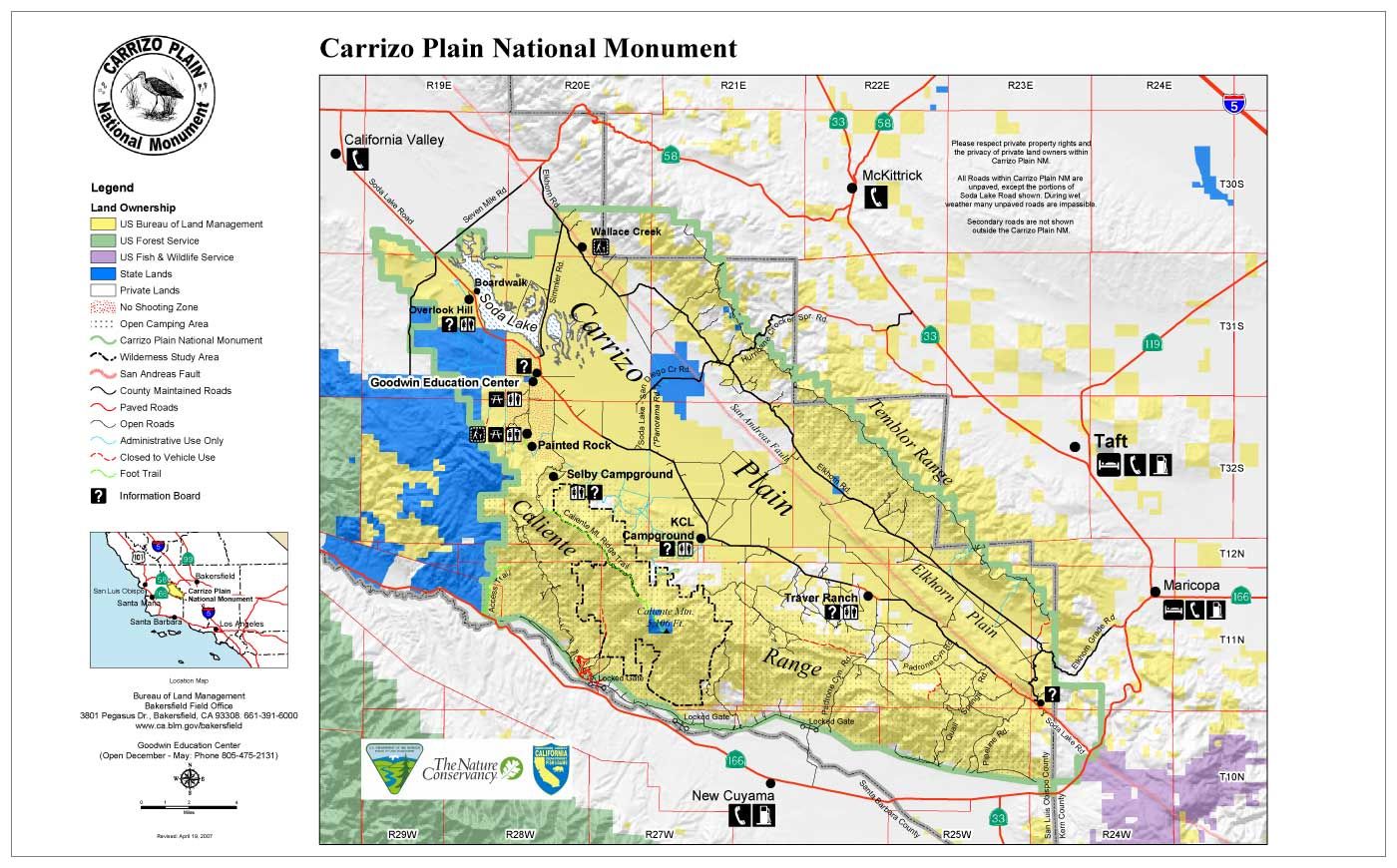Carrizo Plain
Carrizo Plain National Monument is a protected area of the type of a National Monument in the U.S. state of California. It lies in a plain between two mountain ranges and preserves an ecosystem as it originally existed throughout the South of California's Central Valley. The area was made in the last days in office of President Bill Clinton in early 2001 under protection and is managed by the Bureau of Land Management, an agency of the U.S. Department of the Interior.
Description
The Carrizo Plain ( after the Spanish word for reeds ) is located in the Southern California coastal mountains between the small mountain ranges Caliente Range and Temblor Range. It has no natural drainage, all precipitates accumulate in the Soda Lake, an almost year-round dry lake in the northwest of the area. It is characterized by a steppe climate and contains the only large area preserved grassland in California. This way you can be traced in the Central Valley, California, the potential natural vegetation of the neighboring valley of the San Joaquin River. Thanks to irrigation, this is now one of the world's most important areas for growing fruit and the most intensive agricultural area of the United States.
The predominant vegetation consists of Rispengräsern, in which the terrain structure causes a small-scale mosaic of the most diverse plant communities depending on soil humidity, altitude and location. In the deepest layers, the Soda Lake, grow salt-tolerant Report and other Amaranthaceae. Even the slightest bumps protect the soil from the salts, here are various Compositae. Drier, more sites will be settled by lupine. In more sheltered middle layers isolated junipers and oaks. Several small hill ranges are loosely existed with different types of the genus Ephedra. Shortly after rainfall, which occur mainly in the winter months, the level shows a sea of flowers, mainly of the daisy family and lupins.
The protected area is the largest contiguous habitat of the desert subspecies of Kitfuchses. Even before the protected status of the extinct in the area pronghorn and the Thule subspecies of elk were reintroduced. Since the 90s north ausgewilderte California condors can be observed more often continue to search for food in the Carrizo Plain. The plane is resting area and winter quarters for the Canada Crane, the American curlew and the mountain plover as well as a variety of birds of prey. Here grow even more under federal law by the Endangered Species Act as well as under the laws of the State of California specially protected and endangered plant species. Therefore, the level was classified as high priority area before the designation as a National Monument by the competent authority for the protection of species U.S. Fish and Wildlife Service.
On the northeast side of the area, under the flank of the Temblor Range, the San Andreas Fault runs. Because of the dry climate, it is hardly eroded in this section, so that it can be perfectly observed in the Carrizo level.
Carrizo Plain National Monument today
The plane was settled in the second half of the 19th century by Homesteader. In addition, at that time several small ore mines were established in the adjacent mountain ranges. They were abandoned because the region was not lucrative for agriculture nor for mining. Large parts of the area were used as a low-intensity cattle ranch, before they could be purchased by the non-profit conservation organization, The Nature Conservancy. This sold the floor next to the Federal Government on the establishment of National Monuments.
Painted Rock, a sandstone rock at the edge of the plain is the Chumash Indians holy and taking into particular account the protection and care concept in the area. The rocks and other sights of the area, as well as artifacts were recognized in 2012 as a National Historic Landmark.







.jpg)

